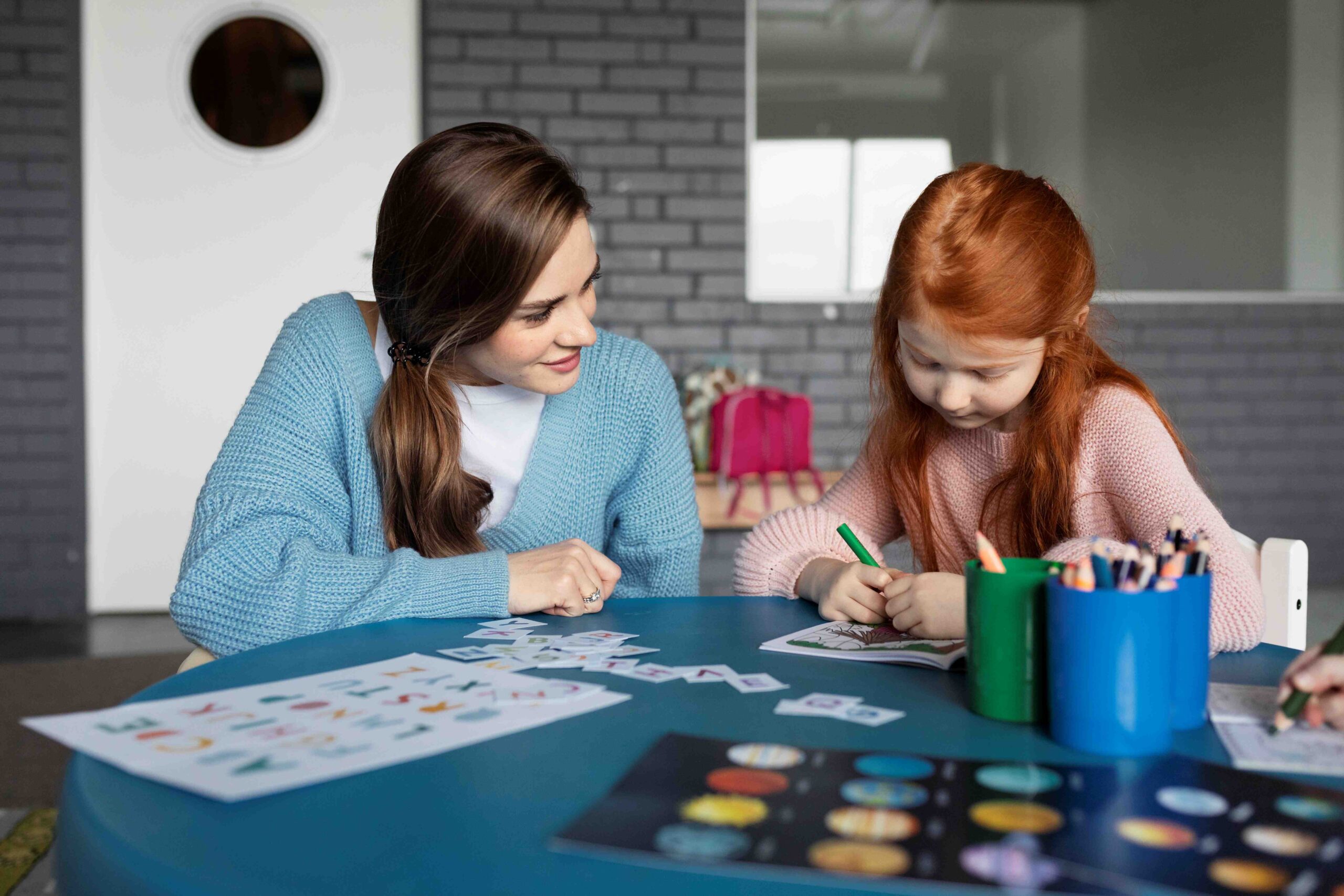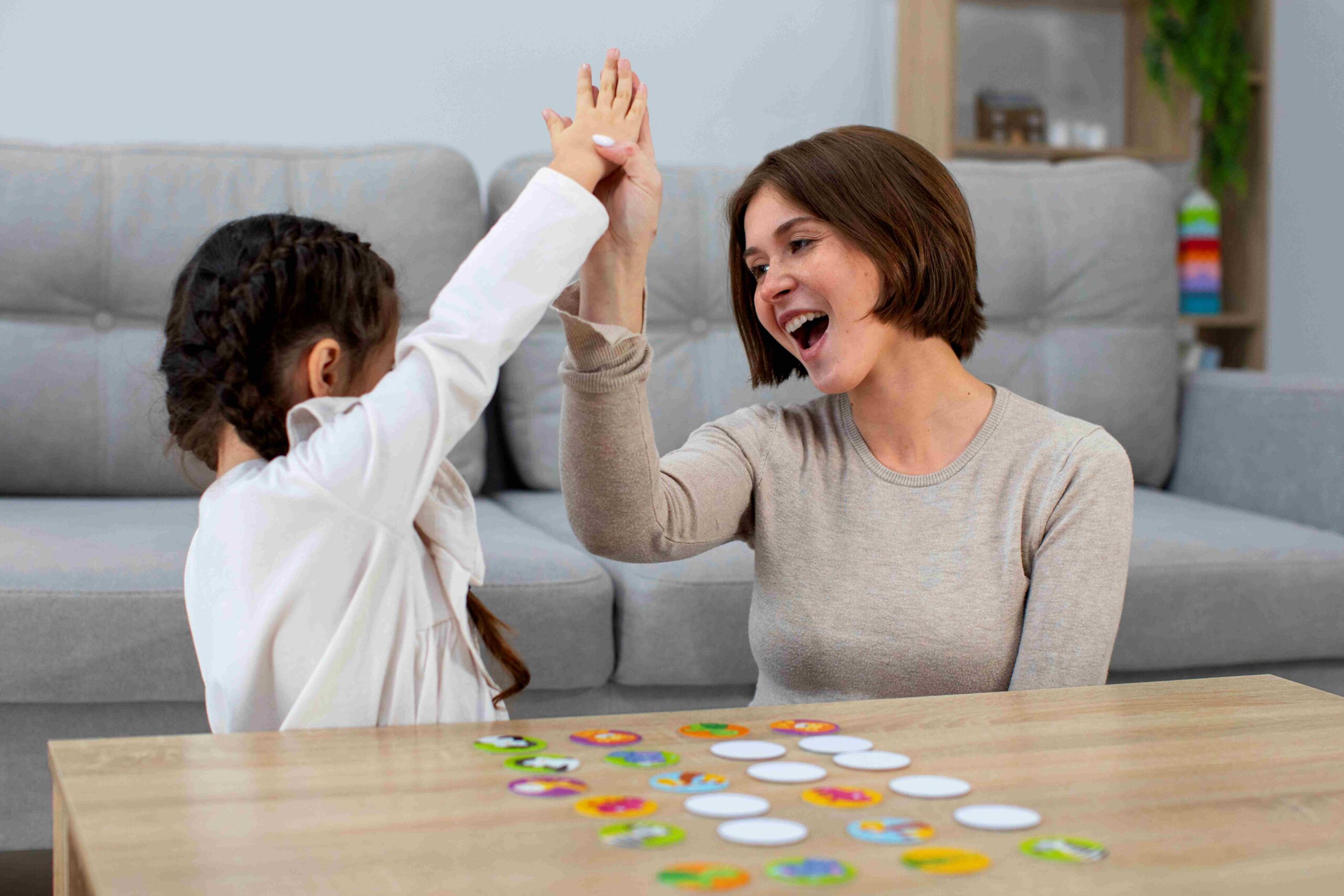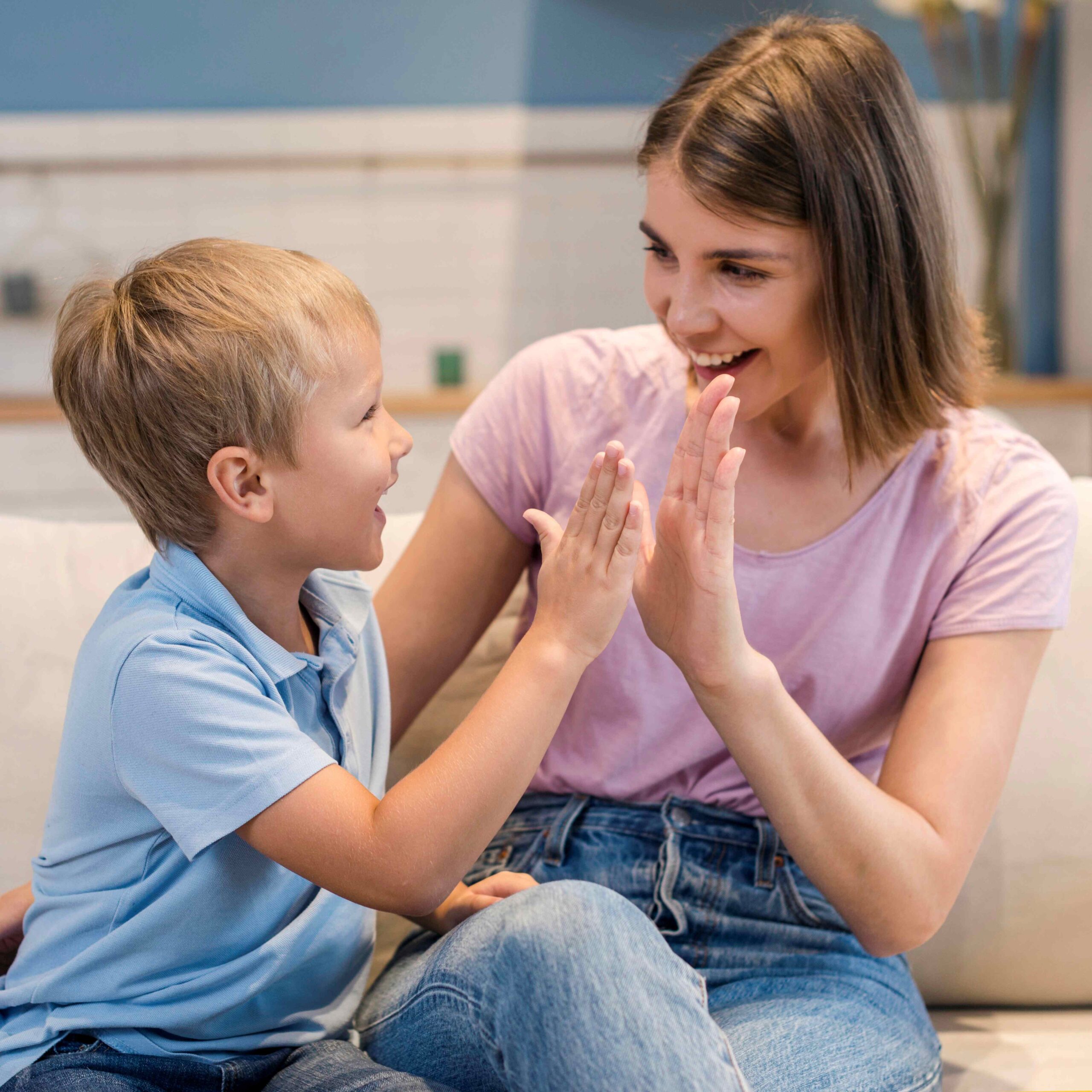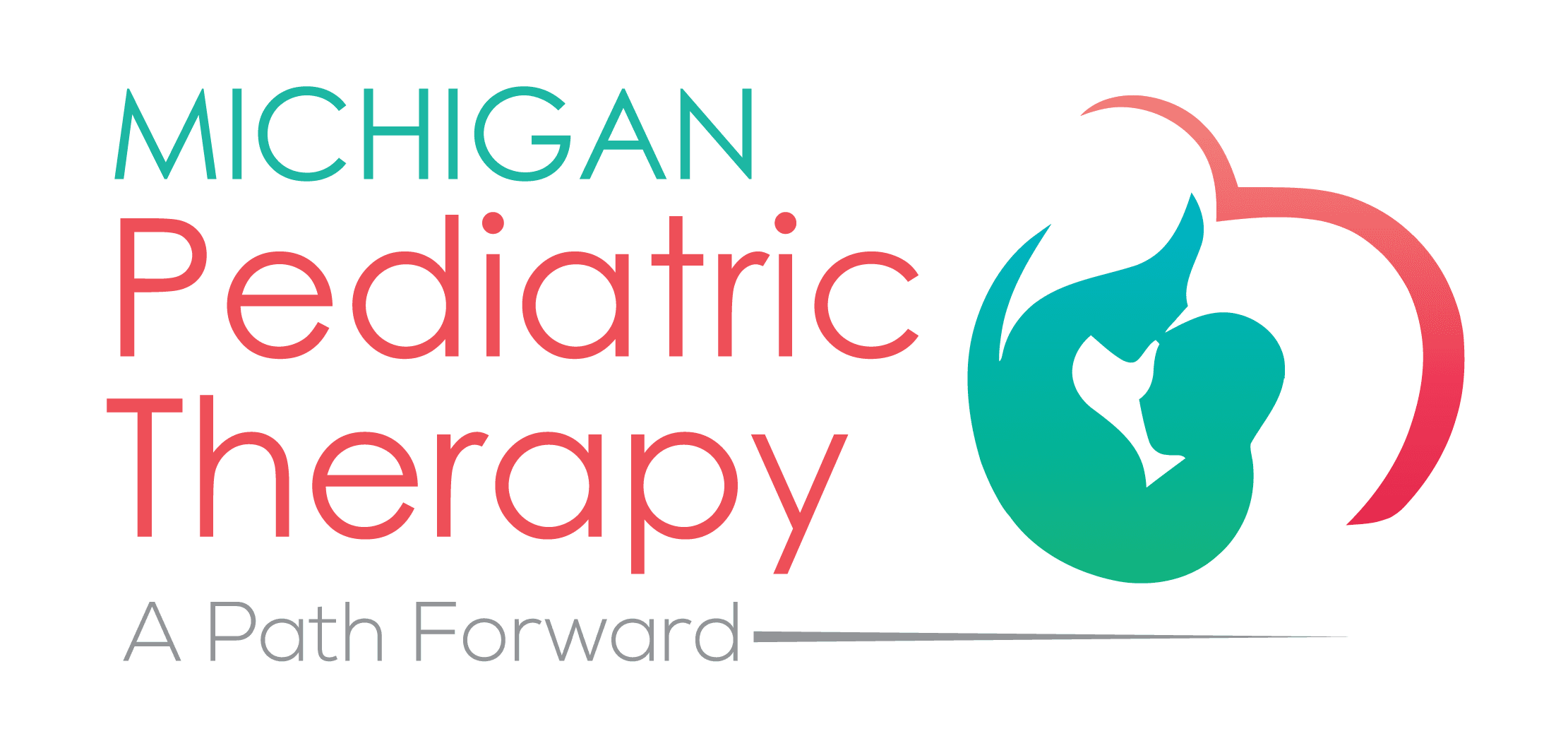Have you ever noticed your child echoing phrases from their favorite movies or repeating chunks of language they’ve heard? While it might seem like simple imitation, it could be a sign of a fascinating and increasingly understood way some children develop language: gestalt language processing. Understanding gestalt language processing can unlock valuable insights into how your child communicates and how pediatric speech therapy can best support their language journey.
At Michigan Pediatric Therapy, we are committed to staying at the forefront of understanding and addressing diverse communication styles in children. We recognize that not all children develop language in the same way. While many children follow an “analytic” language development path, learning single words and then combining them, others are “gestalt language processors.” Recognizing this difference is crucial for providing effective and tailored speech therapy. This article aims to shed light on gestalt language processing, its characteristics, and how our team at Michigan Pediatric Therapy utilizes this understanding to support children’s language development. Whether you’re a concerned parent, a curious caregiver, or a fellow speech-language pathologist, we hope this information provides valuable knowledge and highlights our approach to nurturing every child’s unique communication style.

What is Gestalt Language Processing? Seeing the Whole Picture First
Gestalt language processing is a natural way some children learn and develop language, starting by processing and producing whole chunks or “gestalts” of language rather than individual words. These gestalts can be single words, phrases, intonation patterns, or even entire sentences they’ve heard in their environment. Think of it like learning the lyrics and melody of a whole song before understanding the meaning of each individual word.
These initial gestalts often lack internal structure or are not yet broken down into their individual components. For example, a child might say “Don’t go!” in various situations, not initially understanding “don’t” and “go” as separate units with individual meanings that can be recombined. Over time, through a natural developmental sequence, these gestalts are gradually broken down into smaller meaningful units, allowing the child to create their own novel and flexible language.
Analytic vs. Gestalt Language Processing: Two Different Paths
Analytic Language Processors
Gestalt Language Processors

Recognizing the Stages of Gestalt Language Processing: A Journey of Deconstruction and Creation
Stage 1: Delayed Echolalia
Children in this stage produce whole, unanalyzed chunks of language (gestalts) that they’ve heard. These might be scripts from familiar routines, lines from media, or repeated phrases from caregivers. These gestalts often have a specific intonation pattern associated with the original context. For example, a child might say “Let’s go outside!” every time they see the door, even if they aren’t actually going outside.
Stage 2: Mitigation
Stage 3: Single Words and Two-Word Combinations
Stage 4: Early Sentence Structure
Stage 5: More Complex Grammar
Stage 6: Advanced Grammar and Fluency
Identifying a Gestalt Language Processor: What to Look For
Reliance on Echolalia
Preserved Intonation
Gestalts as Single Units
Difficulty Segmenting Language
Language Development Patterns
Strong Auditory Processing Skills
Potential for Misinterpretation
If you recognize several of these characteristics in your child, seeking a speech and language evaluation from professionals familiar with gestalt language processing is essential.

How Pediatric Speech Therapy Supports Gestalt Language Processors
At Michigan Pediatric Therapy, our speech-language pathologists are trained to recognize and understand gestalt language processing. We believe in meeting each child where they are and tailoring our therapy approaches to their unique language development style. Our approach to supporting gestalt language processors focuses on:
- Identifying the Child’s Stage: We conduct thorough evaluations to determine where a child falls within the NLA framework. This informs our therapy goals and strategies.
- Honoring and Valuing Gestalts: We recognize that these initial chunks of language are the building blocks for future language development. We don’t discourage echolalia but rather work with it.
- Facilitating Mitigation: We use strategies to help the child begin to break down their gestalts into smaller, more flexible units. This might involve highlighting individual words within a familiar phrase or modeling slight variations of their gestalts.
- Supporting the Emergence of Single Words: We create opportunities and use motivating activities to encourage the child to identify and use single words from their gestalts and new vocabulary.
- Promoting Novel Language Generation: As the child moves through the stages, we focus on activities that encourage them to create their own novel two-word combinations and early sentences.
- Utilizing Child-Led and Play-Based Therapy: Our therapy sessions are often child-led and play-based, using the child’s interests and motivations to facilitate language development in a natural and engaging way.
- Providing Parent Education and Support: We work closely with parents and caregivers to help them understand gestalt language processing and provide strategies they can use at home to support their child’s language journey. This might include modeling language in ways that facilitate gestalt breakdown or creating opportunities for the child to use their gestalts in meaningful contexts.
By understanding and respecting the gestalt language processing style, our SLPs at Michigan Pediatric Therapy can provide effective and empowering support that helps children move through the stages of natural language acquisition and develop functional and creative communication skills.

Why Understanding Gestalt Language Processing Matters
Recognizing and understanding gestalt language processing is crucial for several reasons:
- Accurate Assessment: It allows for more accurate assessment of a child’s language abilities and potential. Misinterpreting echolalia as a lack of communication can lead to inappropriate interventions.
- Effective Intervention: Therapy approaches that align with the child’s natural language learning style are more likely to be successful and efficient.
- Reduced Frustration: When a child’s communication style is understood and supported, it can reduce frustration for both the child and their caregivers.
- Unlocking Communication Potential: By working with the child’s gestalts, we can help them gradually unlock the individual components of language and build more flexible and creative communication skills.
Taking the Next Step: Seeking Support at Michigan Pediatric Therapy
If you have concerns about your child’s language development and suspect they might be a gestalt language processor, we encourage you to reach out to us at Michigan Pediatric Therapy. Our experienced and knowledgeable speech-language pathologists are here to provide comprehensive evaluations and develop individualized therapy plans that honor your child’s unique communication style. We serve families throughout southeast Michigan, offering a supportive and nurturing environment where children can thrive.
Understanding gestalt language processing is a journey, and we are here to guide you and your child every step of the way. Contact us today to learn more about our services and how we can help your child unlock their full communication potential, moving beyond single words to expressive and meaningful language.

Michigan Pediatric Therapy
📍 27655 Middlebelt Rd., Suite 130, Farmington Hills, MI 48334
📞 (248) 939-4030
🌐 mipediatrictherapy.com



